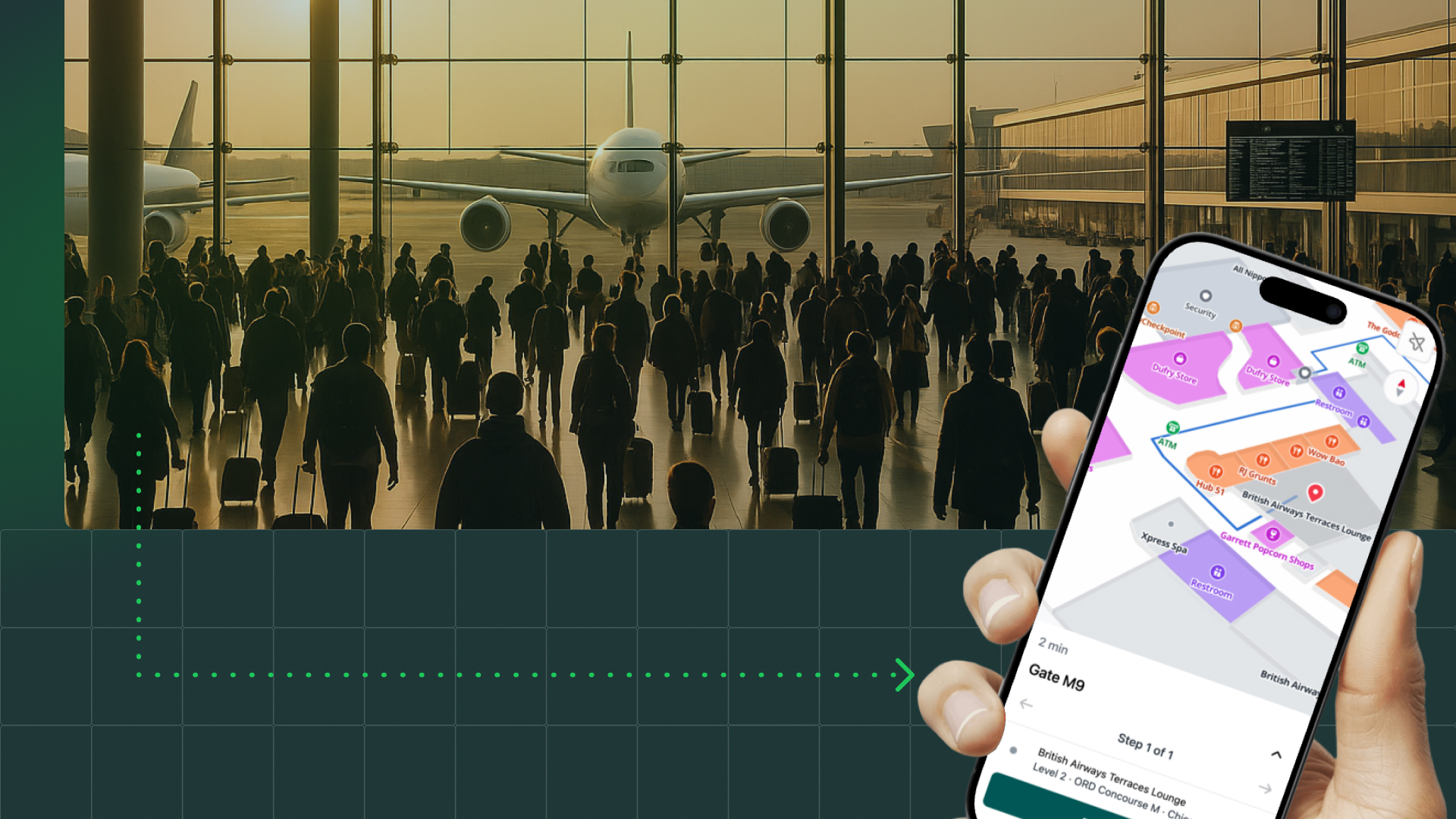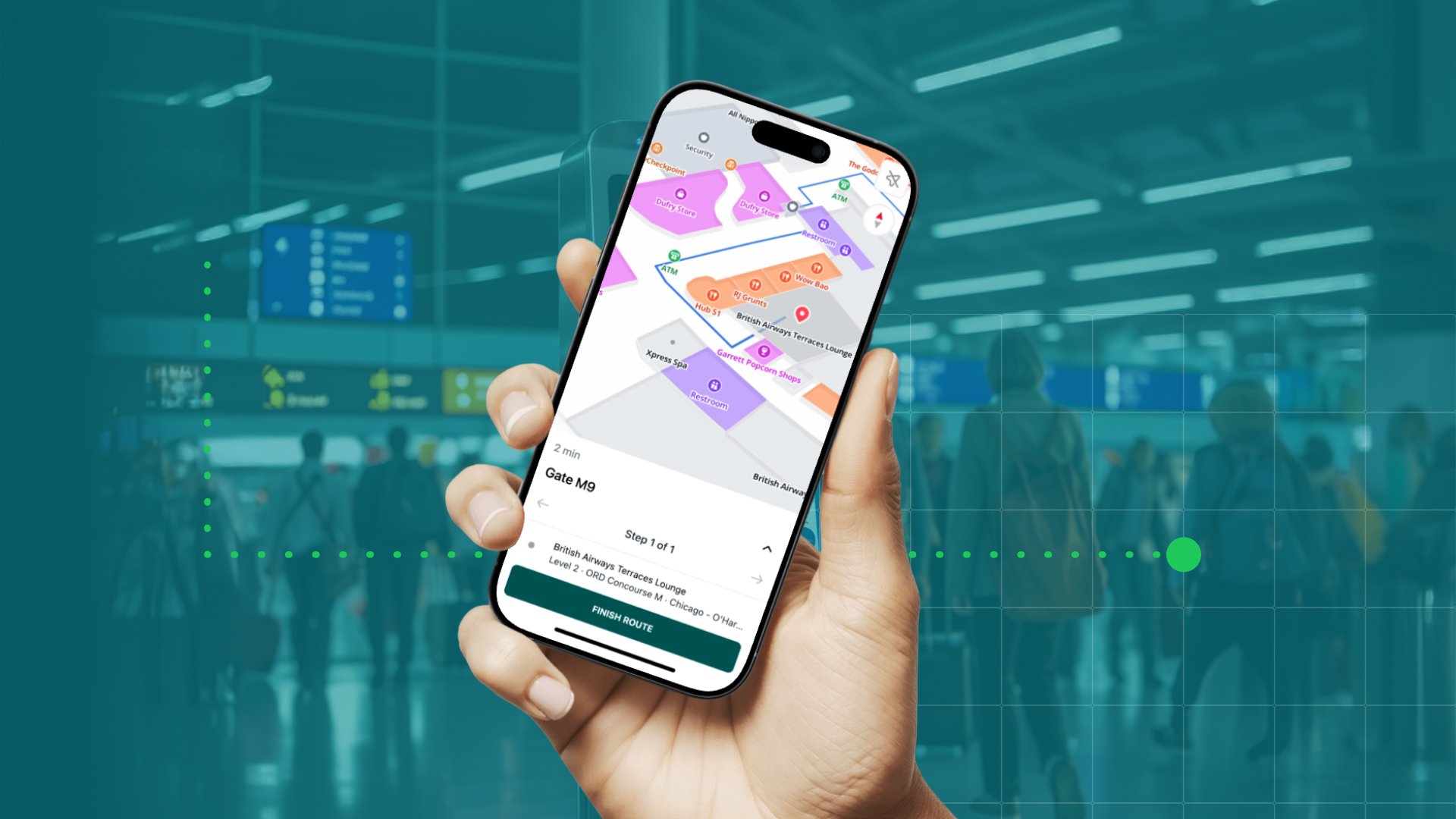7 Ways to Get More Value From Your Airport Map
Airport maps are often treated as static directories or last-minute wayfinding tools—but they can offer so much more. A well-designed airport map supports smoother passenger journeys, improves operational efficiency, and unlocks smarter use of space. When integrated into your digital experience ecosystem, the map becomes a shared spatial layer connecting travelers, staff, and systems in real time.
Here are seven practical ways to get more out of your airport map:
1. Help travelers search by need, not name
Most passengers aren’t searching for “Gate C12” right away—they’re looking for a coffee shop, a baby changing room, or the fastest security line. Tag each point of interest (POI) with everyday language and common needs, like: vegetarian food, tax-free shopping, water refill stations, and power outlets. Make the map searchable by function and traveler intent, not just brand names or labels. This not only supports smoother navigation but also boosts visibility for retail tenants and services.
2. Use QR codes to simplify wayfinding
Indoor navigation systems can be expensive or take months to roll out airport-wide. A quick fix? Place QR codes in terminals, lounges, and transfer zones. When scanned, these launch the map with the passenger’s location pre-filled—making it easy to search, route, and navigate from where they actually are. This small upgrade adds spatial context to digital tools without needing extra hardware or app installs.
3. Extend the map to include parking and transit options
Travel starts before passengers walk through the terminal door. Include parking areas, drop-off lanes, shuttle stops, and check-in areas directly on the map. By bringing outdoor spaces into the experience layer, you help passengers orient themselves earlier and reduce crowding at key entry points.
4. Design systems to fix high-stress moments
Stress peaks during check-in, security, and boarding. Make critical POIs—like toilets, elevators, priority lanes, and help desks—impossible to miss. These locations should be highly visible in the interface and reliably searchable with multiple terms. Smart airport maps reduce friction in high-pressure zones and make time-sensitive navigation faster and more intuitive.
5. Empower staff with access to the same map data
Your airport map isn’t just for travelers. Operations, maintenance, and commercial teams can use it for everything from gate planning to staff coordination. When teams align around a single spatial view, communication improves and decisions happen faster. A shared spatial foundation enables live updates, smart overlays, and consistent communication across departments.
6. Add external IDs to prepare for integrations
Structured data is what turns a visual map into an integrated platform. Assign external IDs to gates, retail spaces, amenities, and equipment zones. These IDs link your map to systems like retail analytics, cleaning schedules, security dispatch, or passenger flow data. It’s a foundational step that enables smarter operations and future-proofed tech integrations.
7. Customize the map based on different user profiles
Not every traveler navigates the terminal the same way. From language and mobility needs to family travel or unfamiliarity with the process, maps should adapt. Create tailored views for parents, international visitors, or anyone requiring extra assistance. You can also update POIs or routing options based on flight disruptions, terminal closures, or peak-hour operations. A responsive map interface makes your airport feel curated, not chaotic.
Your map can do more than direct travelers from Terminal A to B
With small enhancements, it becomes a dynamic layer in your experience strategy—helping passengers move confidently while giving staff smarter tools to manage space and flow. Whether you're focused on elevating passenger satisfaction or unlocking operational gains, the map can be a powerful part of your airport's digital toolkit.
Are you getting the most out of your airport map?
May 19, 2025





.png)